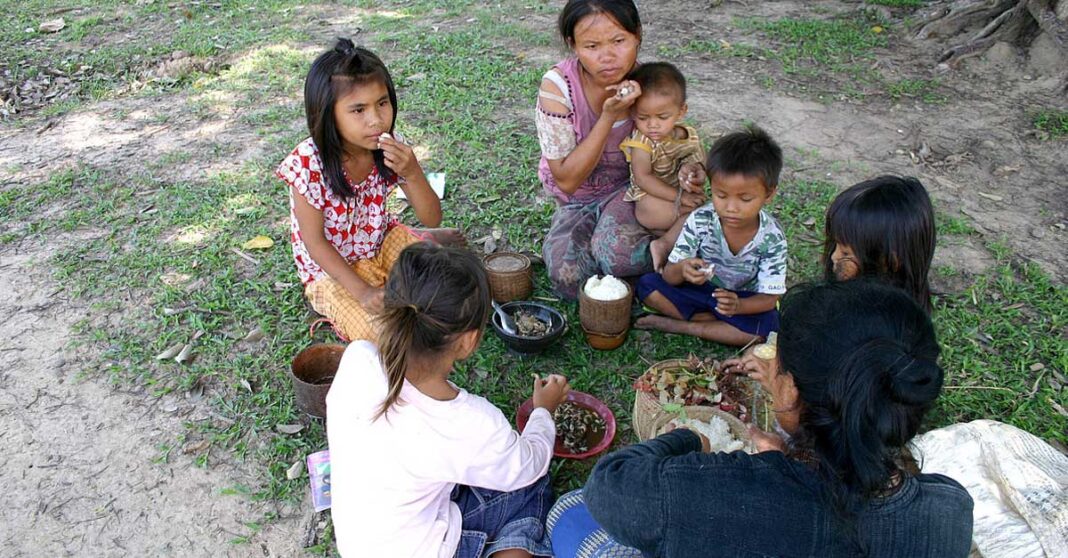Multiple projects have been launched recently to provide food security to disadvantaged families across Laos with support from the World Food Program (WFP).
According to the Ministry of Labor and Social Welfare, extreme weather conditions and Covid-19 have been the main factors contributing to food insecurity for many families across Laos.
This condition is made worse by the government not having sufficient rice stocks to help out families in need, and the market price of rice being higher than usual at the moment, says Deputy Minister of Labor and Social Welfare, Mr. Lee Pao Yang.
Hence, a project to provide emergency assistance was launched by the Ministry of Labor and Social Welfare and the Lao Red Cross, with support from the WFO, to assist the most vulnerable and underprivileged communities in having access to enough food in four targeted provinces of Luang Namtha, Oudomxay, Salavanh, and Sekong.
Vientiane Times reports that the project team will collaborate closely with regional and local authorities to identify families that qualify for aid, register them, and promptly distribute relief supplies.
“As the largest humanitarian organization in the world, we must ensure that people have enough food in times of crisis,” says, Jan Delbaere, Country Director and Representative for WFP in Laos.
Jan adds, “Currently, about 60 percent of Lao people are looking for ways to earn money to spend within their families, while about 16 percent of the population in rural areas is facing food insecurity. They need urgent support to help them get back on their feet after encountering challenges in the past before the country’s economy can recover.”
Recently, the French Embassy, WFP, and Sekong provincial authorities also started a program called Cash Assistant and Resilient Livelihoods for Improved Food Security and Nutrition (CARES) in Sekong Province to support food access and livelihoods in the region.
The French government provided USD 545,852 in food aid to help over 10,600 people to recover from food shortages and malnutrition.
This project is aimed at helping those suffering from high poverty rates and malnutrition, in particular small children, households that have suffered during natural disasters, and disabled people.
Sekong Province currently faces the highest food insecurity rates in the country and has a 50 percent prevalence of chronic malnutrition among children under 5.
“Thanks to this program, France is pleased to contribute to the Lao government’s efforts to achieve Sustainable Development Goal 2 on ending hunger, achieving food security, improving nutrition and sustainable agriculture,” said Siv-Leng Chhuor, Ambassador of France to Laos.
Participants of the program will also receive training and cash grants to establish home gardens and buy small livestock.
According to Jan, the organization’s main goal in Sekong is to help people become self-reliant when it comes to growing their own food. He says, “Our main aim is to ensure that the people of Sekong receive tools to become autonomous producers of their own nutritious food, thus escaping the cycle of poverty and malnutrition.”



